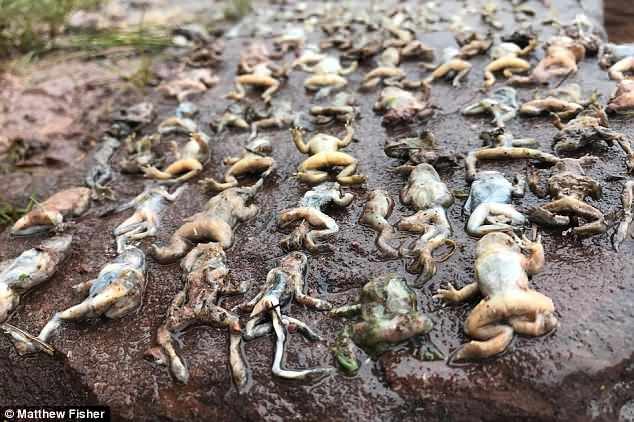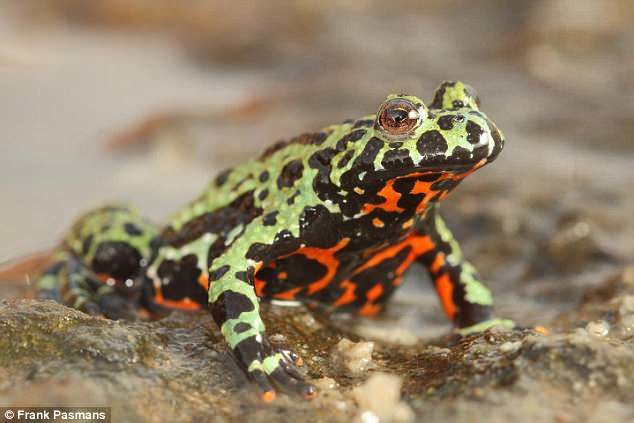
A dangerous infectious disease with the potential to drive species to extinction, Batrachochytrium dendrobatidis (Bd) is also known as chytrid fungus.
It has already decimated more than 200 amphibian species and rewired echo systems all over the world.
Chytrid is passed from animal to animal and spreads rapidly in the wild, causing catastrophic mortality and declines in some species, while others are less affected.
The fungus causes a disease called chytridiomycosis, which attacks the animal's skin, affecting their ability to regulate water and electrolyte levels and leading to heart failure.

'In our paper, we solve this problem and show that the lineage which has caused such devastation can be traced back to East Asia.'
The scientists believe it originated in the Korean peninsula sometime in the 1950s, and they theorized that human activities accidentally spread it across the globe —leading to amphibian fatalities across the Americas, Africa, Europe, and Australia.
'[The pathogen's spread] could have happened from any one event, from the cumulative number of events, or maybe some big anthropogenic events like the Korean War,' said O'Hanlon.
The fungus can infect at least 695 species, and has devastated populations around the world.
From 2009 to 2012, the fungus destroyed Dutch fire salamander populations by more than 99 percent.
An international team of scientists gathered samples of the pathogen from around the world, and sequenced the genomes.
They found four main genetic lineages of the fungus - three of which are found around the world, and a fourth found only in native frogs in Korea.
The genetic analysis showed that 'the range of the disease expanded greatly between 50 and 120 years ago, coinciding with the rapid global expansion of intercontinental trade,' said the report.
The findings offer 'strong evidence for a ban on trade in amphibians from Asia, due to the high risk associated with exporting previously unknown strains of chytrid out of this region,' it added.
Another pathogen affecting salamanders in Europe - (B. salamandrivorans or BSal) -- also emerged from Asia and is spreading via the global trade in pet amphibians.

'Therefore, until the ongoing trade in infected amphibians is halted, we will continue to put our irreplaceable global amphibian biodiversity recklessly at risk.'
In an accompanying Perspective article in Science, Karen Lips - of the University of Maryland's biology department - concurred, saying the findings show that current efforts to control the deadly fungus have not been successful.
'The authors show that all Bd variants are present in the commercial trade of amphibians (including food, pets, and scientific specimens),' she wrote.
This demonstrates 'contemporary intercontinental transmission and the failure of international biosecurity measures to control the spread of this pathogen.'



Reader Comments